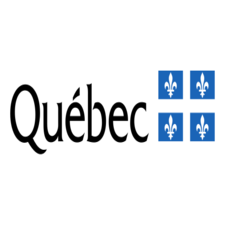RI_540
Type of resources
Available actions
Topics
Keywords
Contact for the resource
Provided by
Formats
Representation types
Update frequencies
status
Scale
Resolution
-

Likelihood of Presence of Harbour Seal in the Bay of Fundy and Port Hawkesbury Area Response Plan. The Coastal Oceanography and Ecosystem Research section (DFO Science) reviewed science sources and local knowledge sources to estimate where Harbour seals are seasonally present and delineate these areas. As of March 2017, this dataset delineates the presence of Harbour seals in the Bay of Fundy and Port Hawkesbury areas of Nova Scotia designated within the Area Response Planning (ARP), identified under the World Class Tanker Safety System (WCTSS) initiative, based on the Transport Canada Response Organizations Standards. A version of this dataset was created for the National Environmental Emergency Center (NEEC) following their data model and is available for download in the Resources section. Cite this data as: Lazin, G., Hamer, A.,Corrigan, S., Bower, B., and Harvey, C. Data of: Likelihood of presence of Harbour Seal in Area Response Planning pilot areas. Published: June 2018. Coastal Ecosystems Science Division, Fisheries and Oceans Canada, St. Andrews, N.B. https://open.canada.ca/data/en/dataset/5bbc1575-4267-44fa-ae35-ee08cc2af8fb
-
“Wood Buffalo National Park - Total Ecosystem Forest Carbon Density” is the annual carbon density (tonnes carbon per hectare) within Wood Buffalo’s forested ecosystems over a 31-year period from 1990 to 2020. Total Ecosystem Forest Carbon Density includes aboveground and belowground biomass, soil carbon, and dead organic matter. Total Ecosystem Forest Carbon Density was estimated for 31 national parks using the Generic Carbon Budget Model (GCBM), a spatially explicit carbon budget model developed by Canadian Forest Service which uses forest inventory, disturbance, and mean annual temperature data along with yield data to estimate growth and merchantable volume for dominant tree species. Species- and Ecozone-specific equations are then used to convert merchantable volume to aboveground and belowground biomass carbon. Ecozones were classified according to Canada Ecological Land Classification Level 1. The GCBM simulates carbon dynamics to produce spatially explicit estimations of carbon stocks and fluxes. The model simulates and tracks carbon stocks, transfers between Intergovernmental Panel on Climate Change-defined pools, and other metrics including net ecosystem production, net biome production, and emissions of carbon dioxide (CO2), methane (CH4), and nitrous oxide (N2O) in annual time steps. The stocks and fluxes are also tracked by disturbance event (e.g., forest fires, insect outbreaks). Total Ecosystem Forest Carbon Density accounts for the effects of natural and anthropogenic disturbances, including wildfires, prescribed burns, and insect outbreaks. These products have a spatial resolution of 30m. This information is part of the Parks Canada Carbon Atlas Series. To obtain a copy of this report, please contact changementclimatique-climatechange@pc.gc.ca. When using this data, please cite as follows: Sharma, T., Kurz, W.A., Fellows, M., MacDonald, A.L., Richards, J., Chisholm, C., Seutin, G., Richardson, K., Keenleyside, K. (2023). Parks Canada Carbon Atlas Series: Carbon Dynamics in the Forests of Canada’s National Parks. Scientific Report. Parks Canada Agency, Gatineau, QC, Canada, 104 p.
-

Mapping of specific ecological development zones (ZAEP) in the urban planning code (CDU) on the territory of Laval.**This third party metadata element was translated using an automated translation tool (Amazon Translate).**
-
Feeding areas, breeding areas, concentration and specie present. Data extracted from the Fish Habitat Management Information System (FHAMIS) according to a literature review of documents produced between between 1977 and 2001
-

Delimitation of the urban perimeters of the City of Rimouski**This third party metadata element was translated using an automated translation tool (Amazon Translate).**
-
The Canadian Environmental Sustainability Indicators (CESI) program provides data and information to track Canada's performance on key environmental sustainability issues. Canada's conserved areas indicators report the amount and proportion of Canada's terrestrial (land and freshwater) and marine area that is recognized as conserved. Well-managed conserved areas are one way to protect wild species and their habitats for present and future generations. Habitat conservation is a measure of human response to the loss of biodiversity and natural habitat. As the area conserved in Canada increases, more lands and waters are withdrawn from direct human development stresses, thereby contributing to biodiversity conservation and improving the health of ecosystems. In turn, healthy ecosystems provide benefits such as clean water, mitigation of climate change, pollination and improved human health. Information is provided to Canadians in a number of formats including: static and interactive maps, charts and graphs, HTML and CSV data tables and downloadable reports. See the supplementary documentation for the data sources and details on how the data were collected and how the indicator was calculated. Canadian Environmental Sustainability Indicators: https://www.canada.ca/environmental-indicators
-

In place since fall 1994, the sentinel fisheries program is the result of a collaboration between Fisheries and Oceans Canada (DFO) and Quebec and Newfoundland commercial fishermen's associations. Under this program, contracts are awarded by tender to fishermen’s associations to carry out fishing activities according to scientific protocols developed by DFO. The main objective of this survey is to collect data that will be used to calculate abundance indices for various fish stocks, including cod, Greenland halibut, Atlantic halibut and rockfish. Description of mobile survey The mobile gear sentinel fisheries of the northern Gulf of St. Lawrence are conducted in the sub-division 3Pn and the divisions 4R, 4S and the northern part of the division 4T of the Northwest Atlantic Fisheries Organization (NAFO). This program follows a stratified random survey plan according to depth strata, NAFO divisions and the type of substrate at the bottom. A standard tow is 30 minutes long and made at a speed of 2.5 knots. The fishing gear is a 300 Star Balloon trawl mounted on a Rock Hopper footgear. The trawl mesh size is 145 mm with a liner of 40 mm in the codend. Unless conditions at sea compromise safety during fishing activity, a retaining cable must be used to standardize the horizontal opening between vessels and the various depths fished. Data are collected by observers at sea or by technicians. The data contained in this program are divided into 4 different projects. -The summer series, carried out during the month of July -The fall series, which covers the period from 1995 to 2002 -The winter series, to study the mixing between the different stocks -The CRP (Cod reproductive potential) series, which targets the reproductive potential. Data For each trait, the total catch is sorted and weighed for each species. The number of individuals caught for each unmeasured fish species is noted. Biological data such as length, weight (sampled, per individual, gonad, liver and stomach), age, sex and maturity migth then be collected on a subsample of many species such as Atlantic halibut, Greenland halibut, lumpfish and Atlantic cod, using a variety of protocols. The biological data are divided into 4 files: a “Metadata” file containing set information, a “Catches” file containing catches per set for fish taxa, a “Carbio” file containing biological and morphometric measurements per individual, a “Freql” file containing the length frequency of fish. The data collected as part of this program is available below. It is important to note, however, that 1) only traits deemed successful have been retained; 2) historical data may contain inaccuracies; 3) the most recent survey is not available for validation purposes.
-

List and geolocation of establishments of the Conservatory of Music and Dramatic Art of Quebec.**This third party metadata element was translated using an automated translation tool (Amazon Translate).**
-

The Census Program Data Viewer (CPDV) is an advanced web-based data visualization tool that helps make statistical information more interpretable by presenting key indicators in a statistical dashboard. It also enables users to easily compare indicator values and identify relationships between indicators.
-

Mapping of exceptional forest ecosystems (EFE) in the urban planning code (CDU) on the territory of Laval.**This third party metadata element was translated using an automated translation tool (Amazon Translate).**
 Arctic SDI catalogue
Arctic SDI catalogue